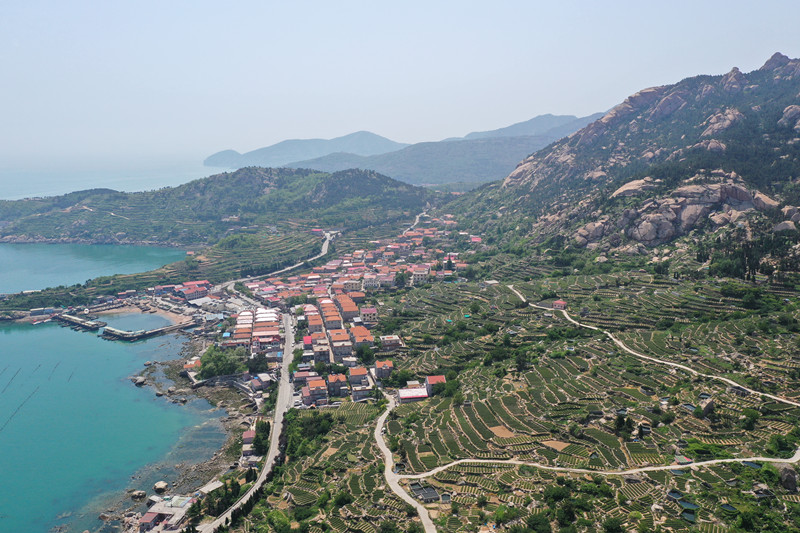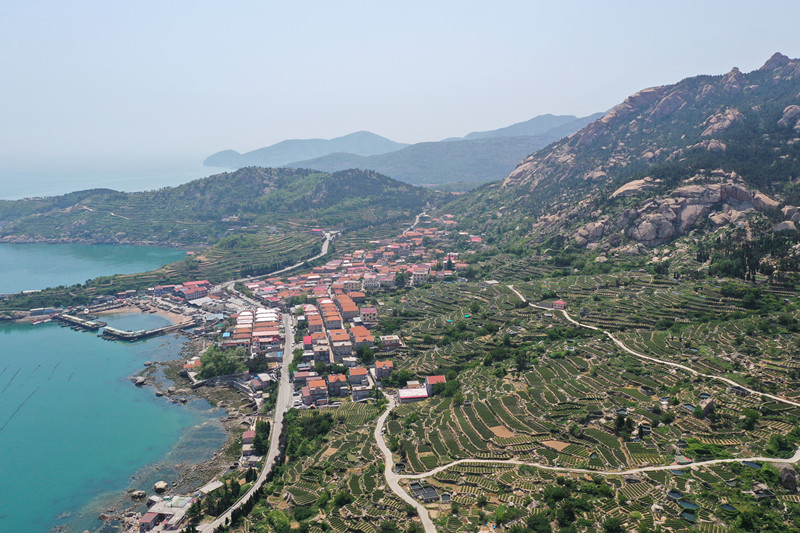
Huangshan Village sits at the east foot of Laoshan Mountain and 11.8 km southeast of Wanggezhuang Subdistrict Office. It faces Laoshan Bay in the east, sees Daguan Island and Shizi Island across the sea and is adjacent to Huangshangu in the south and neighbors Changling Village in the north. The village covers a land that is higher in the west and lower in the east. It is said that in 1404 of the Ming Dynasty, the ancestors of the Lin family came from Yunan to Jinan, and to Linjiataizi south of Qingshan a year later; because of water shortage, they came to the village in 1406. The village is named after its location as it sits in the northwest of Huangshan Mountain. The ancestors of the Sui family came to Xiaowangtuan (today's Xiaowangcun) from Xiaoyunnan, later one of their elder sons came to Huangshan with his families and settled here.

Here lies marvelous mountains such as Huangshangu, Wanghailou and Wannianchuan. The most amazing scenery is the Taohe Stone and Fengliang Ravine. Taohe Stone, meaning peach pit stone, is a masterpiece of the nature. It resembles a real peach pit and you can even tell the shape of the peach pit and the peach seed from the stone. There is a ravine between Huangshangu and Wannianchuan (meaning a lasting boat, which is a giant rock on Huangshan Mountain that resembles a sailboat). There is a clear spring in the ravine that runs all over the year. The strong wind in the ravine always attracts people to rest here in summer, which earns it the name Fengliang Ravine (meaning a cool ravine). Looking into the distance in dim light in days of small rain and fog, you may find mirage in the sea in the northeast; at sunset you will find lights of families extending from the mountain foot to the mountainside, a beautiful night view in the village . Rocks are scattered around the seabed near the village, presenting an ideal home for seafood such as sea cucumbers and abalones and also for fishing. Huangshan Village is 4 km away from Huayan Temple in the north and 2 km from Taiqing Temple in the south with the sea in the east. It processes not only unique touring and environment resources but also rich natural and cultural sites. You can visit ancient temples, climb mountains to see the sunrise, go fishing in the sea and also do some picking in the farmland in this favorable place for tourism and leisure.
青岛崂山风景名胜区版权所有
Copyright(C)2006-2019 All rights reserved.
鲁ICP备17055016号-1 技术支持:青岛新闻网
地址:青岛市崂山区梅岭路29号
邮编:266061
 订阅号
订阅号 服务号
服务号 微博
微博鲁公网安备 37021202000184号